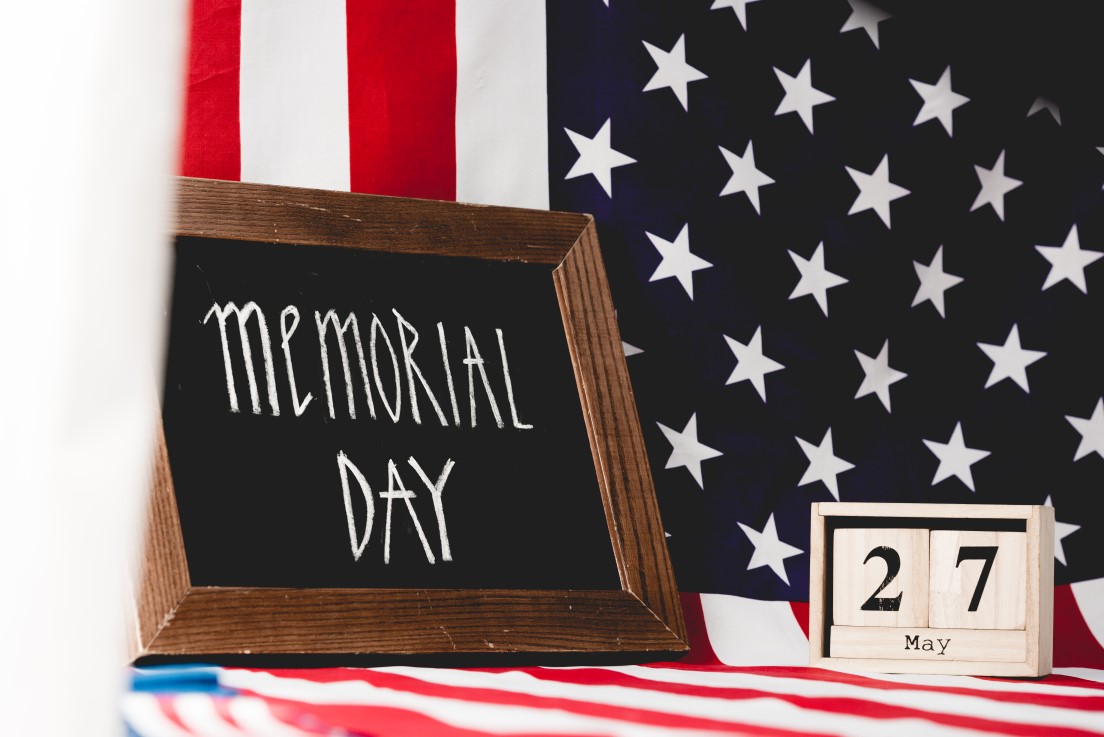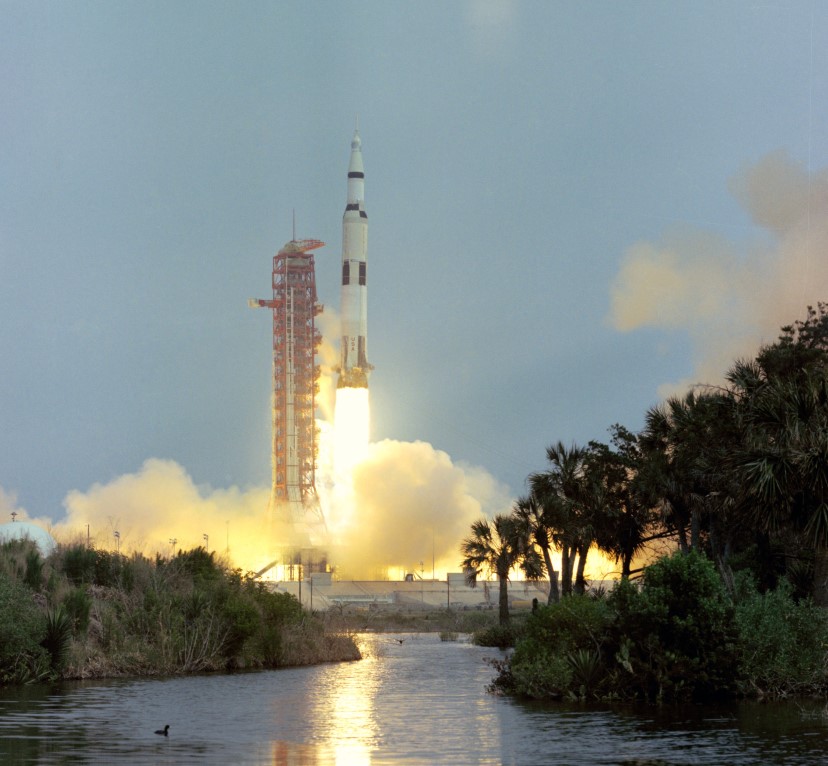Memorial Day – It’s Complicated
Memorial Day just passed. America celebrated with a three day weekend as it has since the late 1960s. But what did we celebrate? Based on advertisements popping up on the computer and on television, we apparently use Memorial Day to celebrate furniture sales and lower prices on automobiles. Stories in the media remind us that Memorial Day remains the unofficial start of the Summer season with images of crowded beaches and lake shores (what happened to social distancing?).
You actually had to dig somewhat deeper into the news cycle to find stories and images of politicians and military leaders laying wreaths on the graves of soldiers and otherwise honoring those who died in battle. Ahh, yes. Memorial Day is the federal holiday set aside to honor and mourn military personnel who gave their lives to defend the United States. U.S. flags are to fly at half staff until Noon on Memorial Day to recognize the ultimate sacrifice paid by military members. The flag is then fully raised to illustrate that America will persevere and remain united despite deep losses at times.
Memorial Day does not readily appear to be connected with retail sales or warm weather revelers. Memorial Day has only recently become about sales and swimsuits. Heck. Memorial Day has only recently become Memorial Day, having been known as Decoration Day for over a century. And that change took an Act of Congress. Memorial Day – a day with a fairly simple stated goal to honor those lost in military service – possesses a surprisingly complex history.
I admit to my own checkered history with Memorial Day. As a younger child, my family would pack up and drive from New Jersey to our relatives in Pennsylvania for Memorial Day weekend. After Church services on Sunday, while still dressed in our Sunday best, the entire family including all still living, very elderly relatives, would drive to the cemetery. The purpose of this annual trip would be to tend to the graves of deceased relatives.
However, it always started as a lengthy game of Lost and Found. The first hour or more would be spent simply trying to locate the graves of our relatives. Every adult appeared to have very distinct and very vivid recollections of landmarks for the location of the graves in their minds. “The graves are on the right after the curve in the path.” Wrong. “The graves are just beyond the large oak tree.” Nope. “The graves are right before the hilly area.” Not a chance. How do I so clearly recall where the graves were NOT located? Guess which kid had to run around each area looking for names on half-buried flat grave markers while in Church clothes and profusely sweating? Hint: it was not my sister assigned with this task.
Once finally located, the headstones would be propped up with more dirt, grass would be trimmed back and flowers planted. I could play in the dirt, but be yelled at if I got my Sunday clothes messy. Someone would then proclaim: “What about Tom Convrey’s grave?” Apparently, Good Ol’ Tom was some distant relative with a grave equally distant away from the rest of the family. Some years we found Tom’s grave and tended to it and some years not.
I recall placement of a small American flag on some, but not all, of the graves of our relatives. At that time, no one explained the significance of that gesture. To me, Memorial Day meant tending to the graves of all family members and missing out playing with my friends for a long weekend. Only later in life did I learn that cemeteries have offices with records of the specific location of each interred person. Apparently, the adults in my family never knew about that little gem.
By my early twenties, I fell squarely in the camp of those who viewed Memorial Day as the start of Summer. Together with a bunch of buddies, we would rent a dilapidated shack for way too much rent along the Jersey Shore. Memorial Day meant the kick off of Summer with three full days to get sunburn and into the spirit. The only dead soldiers we lamented were the empty 12 ounce containers with beer labels on them.
Out of that group from those Summers at the Jersey Shore, we somehow morphed into a heart surgeon, DNA scientist, lawyers, CPAs and an investment professional. People probably thought we would not get through Memorial Day weekend let alone get through advanced degrees. Candidly, honoring wartime fallen heroes was not tops in our thoughts, but we were quite grateful for a three day weekend.
In a speech about the nation’s fallen soldiers, the following was stated in tribute: “Not only are they commemorated by columns and inscriptions, but there dwells also an unwritten memorial of them, graven not on stone but in the hearts of men.” Pericles offered these words for Athen’s soldiers who perished in the Peloponnesian War some 24 centuries ago. The concept of remembering the fallen military heroes has been well-established long before our own Memorial Day.
In the U.S., the origins of Memorial Day clearly date to the Civil War. At that point, all clarity is lost. According to the Center for Memorial Day Research at Columbus State University, at least 25 different places lay claim to being the birthplace of Memorial Day. Warrenton, Virginia holds the distinction of the oldest alleged Memorial Day observance. In June 1861, local newspapers reported that the grave of John Quincy Marr had been decorated to commemorate him as the first soldier to die in battle in the Civil War. No further contemporaneous records could be located to confirm this memorial as annual or a recurring event.
Similar recognition services took place in Mississippi, Georgia, Pennsylvania and South Carolina between 1862 – 1865. As with Warrenton, Virginia, each service appeared more directed at remembering lost military members from particular battles such as the First Battle of Bull Run and the Battle of Gettysburg rather than honoring all fallen in the war. Yet, each location asserts that it possesses the deepest roots for the current Memorial Day observances.
Waterloo, New York ranked among those places with a claim as the birthplace of Memorial Day. Supposedly, in 1866, Waterloo honored local veterans as well as all those who fought in the Civil War. Waterloo’s distinction was that it celebrated Memorial Day as a community-wide event organized by the town druggist and county clerk. In 1966, buying into this narrative, President Lyndon B. Johnson designated Waterloo as the “official” birthplace of Memorial Day. Historians have since confirmed as myth Waterloo’s claims of civic involvement and extended Memorial Day celebrations. Nonetheless, the Presidential distinction remains in place.
Enter into the fray General John A. Logan in 1868. Logan was retired from active duty and served as the commander-in-chief of the Grand Army of the Republic (GAR). GAR was an organization designed to serve Union Civil War veterans. By 1870, GAR’s membership swelled to in excess of 100,000. In 1868, as commander-in-chief of GAR, General Logan proclaimed May 30 as the new annual Decoration Day when graves of those who lost their lives in the Civil War should be decorated with flowers and their memories honored. Logan selected May 30 as flowers would be in bloom and that date was one of the few which did not conflict with the anniversary of any battle from the Civil War.
From 1868 forward, Decoration Day continued on May 30 each year. After World War I, Decoration Day expanded to include all those who died in battle in any U.S. war from the Revolutionary War through the recent Great War. By World War II, the term Decoration Day was losing favor to the term Memorial Day. In 1967, Congress formally declared May 30 as Memorial Day. In 1968, Congress passed the Uniform Monday Holiday Act which moved Memorial Day to the last Monday in May.
Perhaps recognizing Memorial Day as a holiday signaling the start of the warmer, outdoor season is not such a recent phenomena. In 1913, the GAR with its aging and dwindling membership complained about younger Americans born after the Civil War. This new generation possessed a “tendency to forget the purpose of Memorial Day and make it a day for games, races and revelry, instead of a day of memory and tears.” The GAR took particular offense at the scheduling of the Indianapolis Motor Speedway car race – later better known as the Indianapolis 500 – on May 30. GAR lobbied the Indiana legislature to ban the big race from taking place on May 30. However, the new American Legion with its growing and younger membership successfully lobbied the governor to veto the bill. Start your engines on May 30!
GAR’s Decoration Day confronted more fundamental challenges while starting to gain traction in its early years. Opposition in the South to General Logan and GAR could easily be predicted given the short time and distance between the end of the Civil War and Logan’s proclamation. It took but one year for Confederate Memorial Day to be proclaimed in Georgia. Ultimately, ten Southern states declared Confederate Memorial Day a holiday. Most states selected June 3 as Confederate Memorial Day as it was the birthday of Jefferson Davis. Some states selected May 10 as the solemn day the South surrendered.
Both the Ladies Memorial Association and United Daughters of the Confederacy, collectively with over 100,000 members, proved adept at raising funds which they used to build Confederate monuments throughout the South. During the latter part of the 1800s, these organizations shifted the focus of Confederate Memorial Day from honoring the Civil War dead to public commemoration of the Confederate South. A number of these monuments still stand and remain in debate today.
It took a few generations and World War I to start to unite Americans on Memorial Day. It took an Act of Congress to finally eliminate dispute between Decoration Day and Memorial Day. The fundamental purpose of Memorial Day has remained constant throughout – to respect and mourn those who gave the ultimate sacrifice for country. Whether we can get a bargain on a new appliance, head off to the beach with a bunch of buddies, or be forced to run around a cemetery searching for names on tombstones, let us pause to recall that others have not been as fortunate, and, indeed, set the table for us to have these opportunities with family and friends. Just don’t get your Church clothes dirty.


